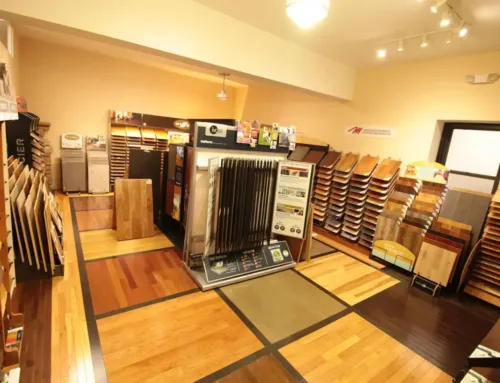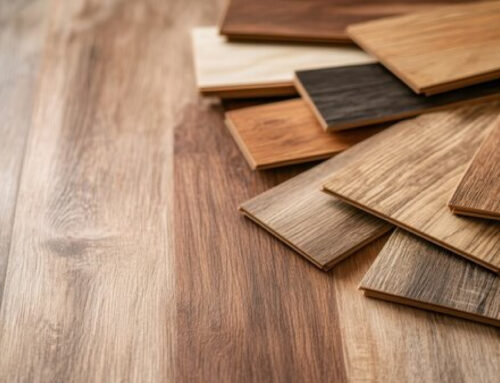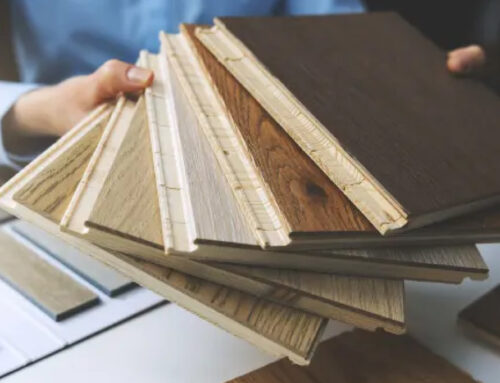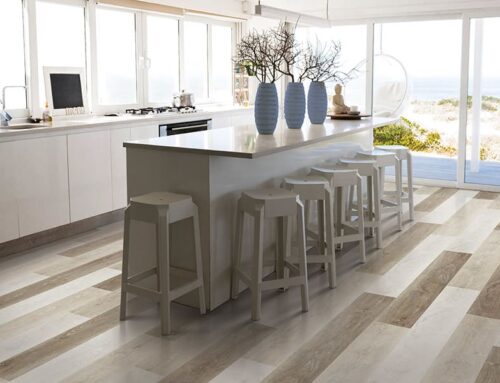This comprehensive guide examines pre-finished vs. Unfinished hardwood flooring across seven crucial areas: definitions, installation processes, cost comparisons, appearance differences, durability factors, selection criteria, and project-specific recommendations. Learn which option suits your timeline, budget, customization needs, and maintenance preferences.
You’re standing in the flooring aisle, overwhelmed by choices that could make or break your renovation budget. One salesperson pushes prefinished floors, promising “instant results,” while another insists unfinished is the only way to achieve “true quality.”
The truth? Both can create stunning floors, but choosing the wrong one could cost you thousands in delays, repairs, or regret. Some homeowners discover too late that their “quick” prefinished installation left permanent seam lines they hate. Others watch weeks slip by as unfinished floors cure, while paying for temporary housing.
Stop second-guessing every decision. Get expert guidance from our flooring professionals at Rustic Wood Floor Supply, who’ll show you exactly which option fits your timeline, budget, and style goals!
Book a Consultation: (678) 691-0533
What is Prefinished Hardwood Flooring?
Pre finished hardwood flooring arrives at your home already sanded, stained, and sealed at the factory. The wood undergoes multiple finishing coats in controlled manufacturing conditions before packaging and shipping.
Key Characteristics of Prefinished Floors
- Beveled edges create slight grooves between planks
- Multiple factory-applied coats ensure consistent protection
- Ready-to-install planks require no on-site finishing
- UV-cured finishes provide superior durability
- Micro-beveled surfaces hide minor imperfections
Benefits of Prefinished Hardwood
Prefinished hardwood offers several compelling advantages for modern flooring projects. The following are the primary benefits that make this option attractive to homeowners:
-
Quick Installation and Immediate Use
Quick installation tops the list of prefinished advantages. Most projects are complete within 1-2 days, compared to weeks for unfinished floors. This speed allows families to maintain their normal routines without extended disruption.
Immediate use means no waiting for finishes to cure. Walk on your new floors the same day installation completes, eliminating temporary housing or lifestyle adjustments.
-
Superior Factory Durability
Superior durability results from factory-controlled curing processes. UV-cured aluminum oxide finishes resist scratches and wear better than site-applied finishes. These industrial-strength coatings undergo precise temperature and humidity controls impossible to replicate on-site.
-
Consistent Professional Appearance
Consistent appearance eliminates variations in color and sheen. Each plank receives identical treatment under controlled conditions. This uniformity ensures your entire floor maintains professional-grade quality without streaks, bubbles, or color variations common in site finishing.
What is Unfinished Hardwood Flooring?
Unfinished hardwood flooring arrives as raw wood planks requiring complete finishing after installation. The process includes sanding, staining, and sealing on-site.
Key Characteristics of Unfinished Floors:
- Raw wood planks with no factory finish
- Flat, square edges create seamless joints
- Site-finished application allows custom treatments
- Multiple sanding stages ensure smooth surfaces
- Custom stain mixing enables unique colors
Benefits of Unfinished Hardwood
Unfinished hardwood flooring provides unmatched flexibility for custom installations and unique design requirements. The following are the key advantages that make unfinished floors appealing:
-
Complete Design Customization
Complete customization allows for any stain color, finish type, or sheen level. Mix custom colors to match existing décor or create unique looks impossible with factory options. Professional finishers can blend multiple stains, create gradient effects, or match historical finishes with precision.
-
Seamless Continuous Appearance
Seamless appearance results from flat edges and uniform finishing across the entire floor surface. This creates a smooth, continuous look without visible plank divisions, making rooms appear larger and more cohesive.
-
Easier Future Repairs and Maintenance
Easier repairs mean you can sand and refinish small sections without noticeable differences. When damage occurs, spot repairs blend perfectly with the surrounding areas since the entire floor shares identical finishing materials and techniques.
-
Lower Material Investment
Lower material costs offset higher labor expenses in many markets. Unfinished planks typically cost $1-3 less per square foot than comparable prefinished options, providing savings for budget-conscious projects.
If you’re confused, don’t navigate this decision alone. Schedule a consultation with our specialists to explore samples, compare costs, and create the perfect flooring solution for your space!
Get Flooring Options: (208) 377-0335
6 Key Differences Between Prefinished and Unfinished Hardwood
Understanding the core differences helps you evaluate which option aligns with your project requirements and lifestyle needs. The following are the major distinctions between prefinished and unfinished hardwood flooring:
-
Installation Timeline and Process
Prefinished floors install in 1-2 days with immediate occupancy. The streamlined process includes acclimation, plank installation, trim work, and cleanup. No finishing work happens on-site.
Unfinished floors require 7-14 days from start to finish. Installation involves laying raw planks, then multiple sanding stages, stain application, and finish coats with drying time between each step.
-
Overall Cost Investment
Prefinished materials cost more upfront at $6-12 per square foot but require less labor at $2-4 per square foot. Total project costs typically range $8-16 per square foot.
Unfinished materials cost less at $4-8 per square foot, but demand higher labor costs of $5-10 per square foot. Total project costs usually fall between $9-18 per square foot.
-
Visual Appearance Characteristics
Prefinished floors feature beveled edges, creating visible seam lines between each plank. The factory finish provides perfect color uniformity across all planks with consistent sheen levels.
Unfinished floors have flat edges that create seamless, continuous surfaces. Site finishing allows subtle color variations and custom sheen levels for a more natural, hand-crafted appearance.
-
Durability and Performance
Prefinished floors offer superior durability through UV-cured aluminum oxide finishes applied under controlled factory conditions. These industrial-grade coatings resist scratches and wear better than site-applied finishes.
Unfinished floors provide standard durability with polyurethane finishes applied on-site. While durable, these finishes may not achieve the same hardness level as factory UV-cured coatings.
-
Maintenance and Repair Options
Prefinished floor repairs present matching challenges since factory colors and finishes are difficult to replicate exactly. Full refinishing requires removing multiple factory coating layers first.
Unfinished floor repairs blend seamlessly since new finishes match existing surfaces perfectly. Spot repairs and full refinishing remain straightforward throughout the floor’s lifespan.
-
Customization Flexibility
Prefinished floors limit customization to the manufacturer’s color and finish selections, typically offering 20-50 standard options. Custom colors or unique finishes aren’t possible.
Unfinished floors provide unlimited customization, including custom stain mixing, multiple color combinations, special effects, and any finish type or sheen level imaginable.
Primary Factors to Consider When Choosing
Making the right flooring choice requires evaluating multiple factors that impact your daily life and long-term satisfaction. The following are the essential considerations for choosing between prefinished and unfinished hardwood:
Project Timeline and Urgency
- Immediate occupancy requirements favor prefinished floors. Complete most installations within 1-2 days with same-day use.
- Extended timelines allow unfinished floors to cure properly without rushing the process.
- Seasonal considerations affect unfinished installations more than prefinished ones due to humidity and temperature sensitivity.
Desired Level of Customization
- Standard colors work well with prefinished options, offering 20-50 factory stain choices.
- Custom matching requires unfinished floors for exact color reproduction or unique combinations.
- Design flexibility increases with unfinished floors for special effects or multiple stain colors.
Budget Constraints and Analysis
- Upfront costs typically favor unfinished materials but require higher labor investments.
- Hidden expenses include ventilation equipment, temporary housing during finishing, and potential weather delays for unfinished projects.
- Long-term value considerations include refinishing potential and durability differences.
Traffic Level and Durability Needs
- High-traffic areas benefit from prefinished floors’ superior factory finishes and immediate full hardness.
- Low-traffic spaces accommodate either option based on other priorities, like appearance or budget.
- Commercial applications usually require prefinished floors for durability and quick occupancy.
Cleaning and Maintenance Preferences
- Simple maintenance routines work for both options using pH-neutral cleaners and avoiding excess moisture.
- Professional maintenance costs remain similar regardless of finish type.
- DIY repairs prove easier with unfinished floors for spot touch-ups and minor refinishing.
Which One is Right for Your Project?
The best flooring choice depends on your specific project requirements, lifestyle preferences, and long-term goals. Here are detailed scenarios to guide your decision-making process:
Scenarios Favoring Prefinished Hardwood Floors
- Quick occupancy situations like rental properties, commercial spaces, or homes with immediate move-in requirements benefit from prefinished installation speed.
- Consistent appearance preferences suit homeowners wanting uniform color and sheen across the entire floor.
- High-traffic environments, including busy households, retail spaces, or offices, need prefinished durability and immediate full hardness.
- Limited disruption projects where dust, fumes, and extended timelines aren’t feasible make prefinished floors the practical choice.
- Budget predictability appeals to homeowners wanting fixed costs without weather-related delays or finishing complications.
Scenarios Favoring Unfinished Hardwood Floors
- Custom color matching projects requiring specific stains or unique combinations need unfinished flexibility.
- Seamless appearance preferences favor unfinished floors’ continuous surface without visible plank lines.
- Historic renovation projects often specify unfinished floors to match existing areas or achieve period-appropriate finishes.
- DIY maintenance capabilities suit homeowners comfortable with spot repairs and future refinishing projects.
- Maximum refinishing potential matters for long-term investment properties or homes planning multiple refinishing cycles.
- Lower material budgets combined with available time make unfinished floors economically attractive.
Final Recommendations
- Busy households with pets, children, or frequent entertaining typically benefit from prefinished durability and quick installation.
- Design-focused projects requiring specific colors or seamless appearances often need unfinished customization capabilities.
- Budget-conscious renovations should compare total project costs, including materials, labor, and timeline factors, rather than material prices alone.
- Investment properties may favor prefinished floors for tenant turnover speed and consistent appearance across units.
In A Nutshell
Pre-finished vs. unfinished hardwood flooring decisions impact your project timeline, customization options, budget, and long-term satisfaction. Prefinished floors excel in quick installation, immediate use, and superior factory durability. Unfinished floors offer unlimited customization, seamless appearance, and easier future repairs.
Consider your priorities carefully: timeline urgency, design flexibility needs, budget constraints, and maintenance preferences. Both options deliver beautiful, lasting hardwood floors when properly installed and maintained.
At Rustic Wood Floor Supply, we understand that choosing the perfect hardwood flooring shapes your home’s character for decades. Our extensive collection features both prefinished and unfinished options from trusted manufacturers, ensuring you find the ideal match for your vision and budget. We provide personalized consultations, accurate cost estimates, and ongoing support throughout your project.
Want to discover your perfect hardwood solution? Contact our experts for expert guidance, fair pricing, and the quality flooring your home deserves.
Call Us Today: (509) 921-5585
Frequently Asked Questions
What is the main difference between prefinished and unfinished hardwood flooring?
Prefinished floors arrive factory-finished and installed quickly, while unfinished floors require on-site sanding, staining, and sealing after installation, offering complete customization.
Which hardwood flooring option is easier and faster to install?
Prefinished hardwood installs faster and easier, typically completing within 1-2 days with immediate use, compared to unfinished floors requiring 7-14 days.
Can I customize the stain color and finish with prefinished hardwood flooring?
Prefinished floors offer limited customization to manufacturer color selections, while unfinished floors allow unlimited custom stain colors and finish options.
Which type of hardwood flooring is more durable and easier to repair?
Prefinished floors typically offer superior durability with factory UV-cured finishes, while unfinished floors provide easier spot repairs and refinishing.
How do the costs of prefinished and unfinished hardwood flooring compare, including materials and installation?
Material costs favor unfinished floors by $1-3 per square foot, but higher labor costs often balance total project expenses between both options.
Author Profile
- I have worked in hardwood flooring for the last 8 years. Use to run a company of residential crews as well as a company with gym flooring. If you need floor installation or refinishing help, I should have an answer or at least get you in the right direction.
Latest entries
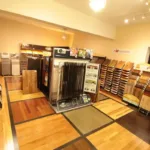 FlooringDecember 24, 2025Right Advice For Picking The Ideal Hardwood Flooring Options
FlooringDecember 24, 2025Right Advice For Picking The Ideal Hardwood Flooring Options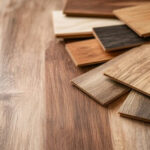 FlooringDecember 22, 2025What is Your Favorite Type of Hardwood Flooring and Why?
FlooringDecember 22, 2025What is Your Favorite Type of Hardwood Flooring and Why?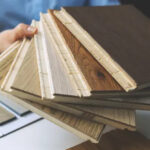 FlooringDecember 15, 2025What is the Most Durable Engineered Hardwood Flooring?
FlooringDecember 15, 2025What is the Most Durable Engineered Hardwood Flooring? FlooringDecember 12, 2025How Do You Maintain Vinyl Flooring in Spokane Homes?
FlooringDecember 12, 2025How Do You Maintain Vinyl Flooring in Spokane Homes?

